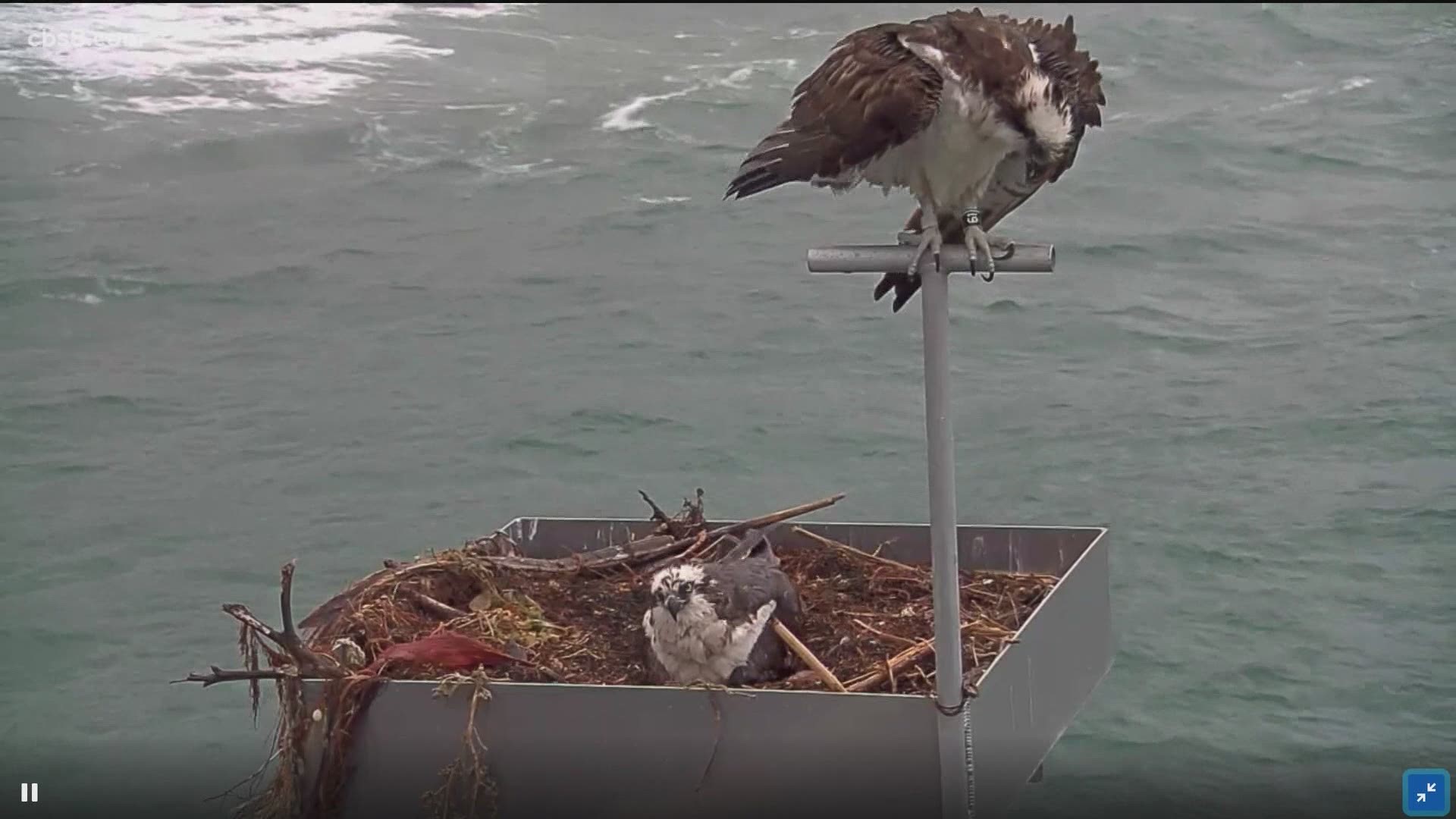SAN DIEGO — A new livestream, from the Scripps Pier at UC San Diego, is attracting more eyes around the world as it shares the unique ways of birds of prey that call San Diego home.
Edna and Ozzie can be seen on the live streaming cam which overlooks their nest hanging over the Pacific Ocean at La Jolla Shores. You may see Ozzie bring fish that he grabs from the ocean with his talons. He usually eats the fish first then shares what he doesn’t want with Edna who waits and watches.
Many local environmentalists also wait and watch from the pier. But this is no longer only a treat for those who work at the Scripps Institution of Oceanography. Now, people around the world can check out the livestream of this osprey cam.
And they are.
“Oh, its fantastic quality, I’m addicted… the view with the camera has turned out to be quite spectacular with the ocean and the surfers in the background,” Christian McDonald, Scripps Pier Manager, said.
The interest in Edna and Ozzie is growing in just the past few weeks since the camera went live.
“It’s really encouraging to see people get so excited about these birds,” McDonald said.
People watch their interactions at places like White Sands, a senior living community in La Jolla.
Bev Grant said, “Since this camera opened, we’ve all been glued. We are on the computer emailing each other… did you see that? Look at that wingspan, can you believe that?”
Grant said, “It’s nature. We need something to laugh at, something to enjoy, something to see growing and some hope… and those are hope.”
It is something that’s been a few years in the making.
McDonald has watched the osprey fly around the pier since he started working here and said, “They’re not afraid of us, they use the pier to hunt for fish. It’s a great vantage point.”
So Bev Grant, Christian McDonald and other great minds at the Scripps Institution of Oceanography decided to make a nest for them, putting material like sticks in a 4 ft. by 4 ft. platform, complete with a boom.
Grant explained, “We had architects out here, we had the shop construction who did this in stainless steel. We did the research on the dimensions like how big it should be like how tall it should be.”
They really thought of everything to make sure they have a safe happy home. If severe weather is coming, or strong onshore winds, they would bring the boom in and it would be protected by this building on the pier.
And Surfline donated the high-quality camera.
The goal here is to keep watching these birds thrive. That wasn’t always the case. Back in the 60s and 70s, the use of the pesticide DDT put many birds in danger. This includes the bald eagle, brown pelican, peregrine falcon, and osprey. Their eggs became too thin and chicks stopped hatching.
“They would crack when mother went to nest on them,” Grant said.
You might think Grant is a scientist too, but she’s actually a retired English teacher. She taught for 28 years, a popular face at Torrey Pines High School, even traveling overseas with her students on school trips.
Her love for birds and all animals really ramped up when she went on a trip to Antarctica, “So you become interested in animals as you travel in nature's wonders.”
She had met Art Cooley, the co-founder of the Environmental Defense Fund, which helped end the use of DDT. And that’s a main reason you’ll now notice more osprey gliding and diving along the California coast.
Grant said, “It’s enheartening especially in a world that’s just gone through a pandemic to see something positive, something nurtured, something being cared for.”
Osprey mate for life and usually lay eggs in April through May. Ozzie and Edna are still young but experts believe we may see chicks hatching on the Scripps Pier in the next few years.
WATCH RELATED: Scripps Institution of Oceanography SURF program thriving in its 10th year

